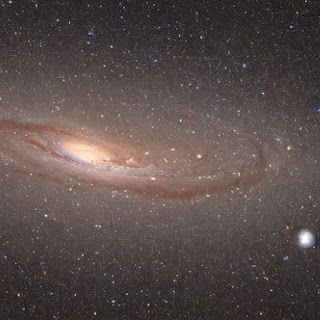Exploring the Universe with the James Webb Space Telescope
The universe has always fascinated humanity, igniting our curiosity about the cosmos beyond our planet. Over the years, space telescopes like the Hubble Space Telescope have provided us with breathtaking images and invaluable insights into the universe. However, as technology advances, so does our ability to explore the cosmos. In this blog post, we'll delve into the remarkable James Webb Space Telescope (JWST), often dubbed as the "Next-Generation Hubble," and explore its significance in the world of astronomy.
The Birth of a Vision
The idea for the James Webb Space Telescope dates back to the early 1990s, when astronomers and scientists recognized the need for a more advanced space telescope than Hubble. Named in honor of James E. Webb, NASA's second administrator, who played a pivotal role in the Apollo program, this telescope represents a culmination of decades of planning, design, and engineering.
Unraveling the Mysteries of the Universe
1. **Unprecedented Observational Power:** JWST is designed to observe the universe in the infrared spectrum, which allows it to peer through cosmic dust clouds and capture images of celestial objects that were previously hidden. This capability enables scientists to study distant galaxies, stars, and planetary systems with unparalleled clarity.
2. **Studying the Early Universe:** One of JWST's primary objectives is to study the early universe, particularly the formation of the first galaxies, stars, and planetary systems. By observing light from these ancient objects, scientists hope to gain insights into the origins of our universe.
3. **Characterizing Exoplanets:** JWST has the capability to analyze the atmospheres of exoplanets, planets that orbit stars outside our solar system. This is a significant step towards understanding the potential habitability of these distant worlds and searching for signs of life beyond Earth.
4. **Investigating Solar Systems:** The telescope will provide detailed observations of our own solar system, including the gas giants and their moons, as well as asteroids and comets. This information will aid in our understanding of planetary formation and evolution.
Technological Marvels
1. **Sunshield:** JWST's sunshield is a crucial component that keeps its instruments cool. It consists of five layers of a special material that block heat from the Sun, allowing the telescope to operate at extremely low temperatures necessary for infrared observations.
2. **Precise Mirror:** The telescope features a 21-foot (6.5-meter) primary mirror composed of 18 hexagonal segments that unfold in space. This mirror is coated with a thin layer of gold to enhance its reflectivity in the infrared spectrum.
3. **Cutting-Edge Instruments:** JWST is equipped with four scientific instruments that cover a wide range of observations, including the Near Infrared Spectrograph (NIRSpec) and the Mid-Infrared Instrument (MIRI). Each instrument has unique capabilities that contribute to the telescope's versatility.
Launch and Deployment
The launch of the James Webb Space Telescope is a highly anticipated event in the world of astronomy. The telescope will be launched aboard an Ariane 5 rocket from French Guiana. After reaching its destination at the second Lagrange point (L2), located approximately 1.5 million kilometers (930,000 miles) from Earth, JWST will begin its extensive commissioning process. This will involve unfolding its sunshield, deploying its instruments, and calibrating its systems to prepare for its scientific mission.
Conclusion
The James Webb Space Telescope represents a monumental leap forward in our quest to understand the universe. Its ability to peer deeper into space and time than ever before will undoubtedly lead to groundbreaking discoveries, revolutionizing our understanding of the cosmos. As we await its launch and the commencement of its scientific operations, the anticipation and excitement among astronomers and space enthusiasts worldwide continue to grow. The James Webb Space Telescope is poised to reveal the universe in a whole new light, opening doors to knowledge and discoveries we can only imagine today.



Comments
Post a Comment